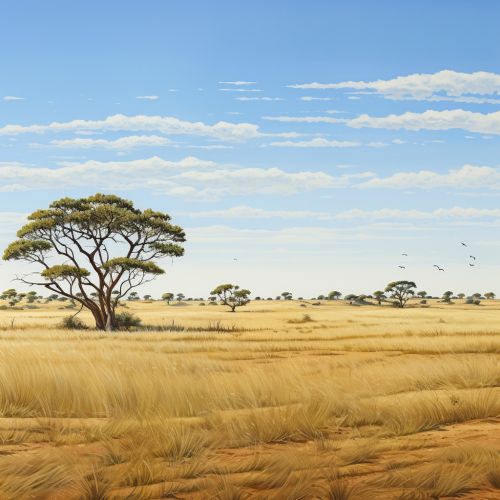Sahel
Geography
The Sahel is a transitional eco-region in Africa between the Sahara Desert to the north and the Sudanian Savanna to the south. Covering a vast area of approximately 3,053,200 square kilometers, it stretches across the continent from the Atlantic Ocean in the west to the Red Sea in the east. The Sahel encompasses parts of several African countries, including Senegal, Mauritania, Mali, Burkina Faso, Algeria, Niger, Nigeria, Chad, Sudan, and Eritrea.


Climate
The Sahel is characterized by a semi-arid climate, with average annual rainfall ranging from 100 to 600 mm. The region experiences a single rainy season, which lasts from June to September. The rest of the year is dry, with high temperatures and intense evaporation. The Sahel is particularly susceptible to climatic variability and has experienced significant periods of drought, most notably in the 1970s and 1980s, which had severe impacts on the region's environment and human populations.
Flora and Fauna
The Sahel's vegetation is mainly composed of grasses, shrubs, and sparse trees. The region is home to a variety of wildlife species, including several that are adapted to its harsh conditions. These include the Dorcas Gazelle, the Fennec Fox, and the African Wild Dog. The Sahel is also an important area for migratory birds, with species such as the Abdim's Stork and the African Swallow-tailed Kite using the region as a corridor during their annual migrations.
Human Settlement and Economy
The Sahel has a long history of human settlement, with archaeological evidence suggesting that the region has been inhabited for at least 10,000 years. Today, the Sahel is home to numerous ethnic groups, including the Fulani, the Tuareg, and the Hausa, among others. The region's economy is primarily based on agriculture and livestock herding, with millet, sorghum, and livestock being the main products. However, the Sahel's harsh climate and frequent droughts pose significant challenges to its inhabitants, leading to food insecurity and economic instability.
Environmental Issues
The Sahel faces several environmental challenges, including desertification, deforestation, and loss of biodiversity. These issues are exacerbated by climate change and human activities such as overgrazing and unsustainable farming practices. Efforts to address these challenges include reforestation initiatives and the promotion of sustainable land management practices.
